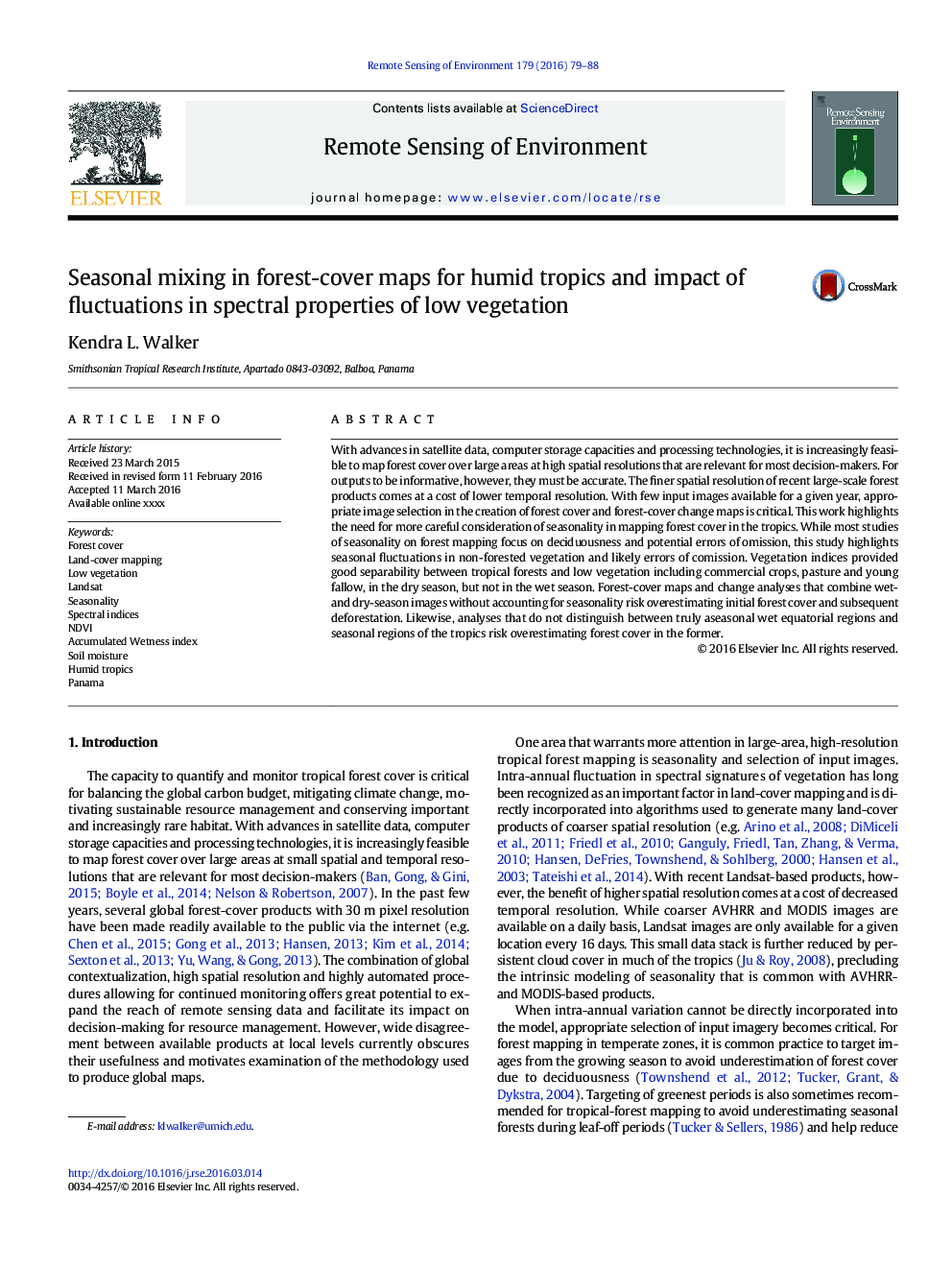| Article ID | Journal | Published Year | Pages | File Type |
|---|---|---|---|---|
| 6345465 | Remote Sensing of Environment | 2016 | 10 Pages |
Abstract
With advances in satellite data, computer storage capacities and processing technologies, it is increasingly feasible to map forest cover over large areas at high spatial resolutions that are relevant for most decision-makers. For outputs to be informative, however, they must be accurate. The finer spatial resolution of recent large-scale forest products comes at a cost of lower temporal resolution. With few input images available for a given year, appropriate image selection in the creation of forest cover and forest-cover change maps is critical. This work highlights the need for more careful consideration of seasonality in mapping forest cover in the tropics. While most studies of seasonality on forest mapping focus on deciduousness and potential errors of omission, this study highlights seasonal fluctuations in non-forested vegetation and likely errors of comission. Vegetation indices provided good separability between tropical forests and low vegetation including commercial crops, pasture and young fallow, in the dry season, but not in the wet season. Forest-cover maps and change analyses that combine wet- and dry-season images without accounting for seasonality risk overestimating initial forest cover and subsequent deforestation. Likewise, analyses that do not distinguish between truly aseasonal wet equatorial regions and seasonal regions of the tropics risk overestimating forest cover in the former.
Keywords
Related Topics
Physical Sciences and Engineering
Earth and Planetary Sciences
Computers in Earth Sciences
Authors
Kendra L. Walker,
